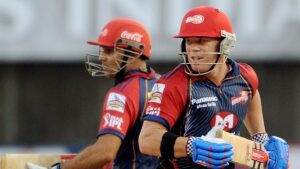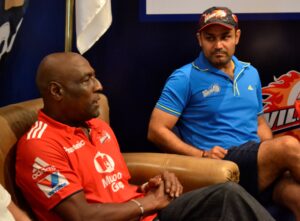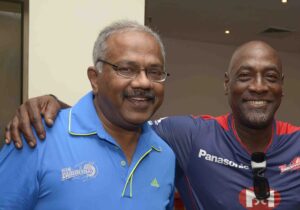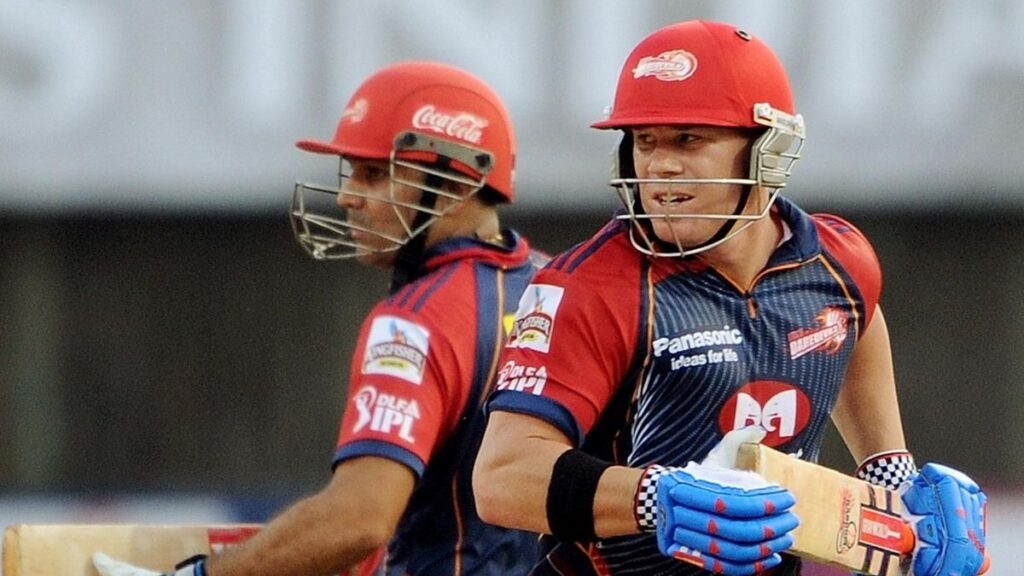
By G Rajaraman
Nostalgia can do the strangest of things to people. Much against the credo of living in the present, it makes them delve into the past. Though nearly a decade has passed and much water has flowed under the bridge, with another edition of the Indian Premier League (IPL) upon us, I find it easy to drop all else and travel back to my time as media manager of the Delhi Daredevils.
In four seasons, the IPL had already created jobs for countless people and was growing into an economy of its own, especially with it bucking the economic downturn. It had established itself as a popular brand, with the film industry wary of releasing new films in that period since distributors perceived competition from the new entertainment product.
GMR Sports, owner of Delhi Daredevils, was one of the few franchises that trusted media persons to handle the job of its media manager. V Krishnaswamy, my colleague, had served the team in that capacity in the first four seasons. TA Sekar, a former India fast bowler, had returned to Delhi from Mumbai Indians and asked me if I would join the franchise. I did.
I joined Delhi Daredevils in December 2011. Flying with the team to other venues, travelling in the same coach as the players, watching them help the marketing team complete sponsor commitments, and encouraging them to speak with the Delhi media so that the team would find space amidst the rich and diverse coverage.
There are so many memories from my two-year journey with the Delhi Daredevils that it would be unfair to pick one ahead of the others. But weeks in the company of players of the calibre of Virender Sehwag and Kevin Pietersen, David Warner and Mahela Jayawardene, Ashish Nehra and Irfan Pathan, came as an opportunity to watch them function from close quarters.

One thing was clear – no player treated the IPL as a hit-and-giggle affair. For them, it was serious business. They wanted to offer value for the money they earned from the event. For instance, watching Morne Morkel, the South African paceman, prepare for a game offered great insight into how focused he was about his craft, as well as his physical and mental make-up.
I stayed away from the dressing room and the dug-out during matches – the odd visit there would draw the attention of the anti-corruption officials at the ground. But I would be on hand at the post-match presentation to take either the captain or the player of the match to the media interaction.
The player of the day would always step up and address the media. It was after a match-winning knock against Mumbai Indians that Sehwag told me to take Mahela Jayawardene, the captain, to the press conference. “The team has lost so many matches that it is only fair that Mahela meets the media tonight after our victory,” he told me.
That unbeaten blitz of 95 will remain etched in my mind. Not that Sehwag had not essayed better ventures, but his innings came after an inspirational talk by Sir Vivian Richards, team mentor, in his maiden meeting with the players. He said it was vital to ‘bluff confidence’ when not in the best of form. Sehwag took that advice and blasted the Mumbai Indians attack that night.
I cannot forget how Sehwag and Irfan Pathan would make time to meet their fans, especially when things were not going the team’s way. They understood the value the fans brought to the team, especially since Delhi is a melting pot of cultures where people had little hesitation in backing teams from their own home states.
Of course, firefighting is part of any media manager’s role and anticipating such fires is critical to be able to douse them. The one flashpoint in my time came when J Jayalalitaa, then Tamil Nadu Chief Minister, decided that no Sri Lankan cricketer would be allowed to play in the 2013 edition of the IPL in Chennai.

Even as the team was coming together for training sessions at the Jamia Milia Islamia ground in Delhi, a reporter with a penchant for the controversial came over, hoping to get Sekar to say something controversial. I had made it clear to him that the team management would go by the decision of the IPL Governing Council, and would not take questions on the subject.
The reporter promised he would not ask any question on the Tamil Nadu Government’s decision, but would focus on the team’s preparation. But just as predictably as night follows day, he popped the question, prompting me to intervene. It was an unpleasant thing to do, given how sensitive the subject was, but there was no way I would let Sekar be the fall guy.
Have things evolved? I would like to think so, even though there is a strong belief that the biggest beneficiaries are no longer the cricketers themselves. Of course, the annual salary cap for each franchise has risen more than two and a quarter times from the inaugural year to Rs 95 crores now.
But does that compare at all with, say, the growth of media rights (x11.80) from the time of its inception? Or with the growth of IPL title sponsorship from Rs. 40 crores in 2008 to Rs. 300 crores this year. Then again, this is not the time or the place to start a debate on how the players are not the biggest beneficiaries. Instead, let us look at some of the changes in the past decade.
The exponential growth of digital media has made franchises invest more in digital properties to reach out to their fans – and keep the mainstream-media engagements to the bare minimum. Indeed, the players’ interaction with traditional media is inversely proportional to the increase of TV and digital audiences and while it has made the journalists’ job difficult, it is understandable.
Rajaraman was media manager of Delhi Daredevils in the 2012 and 2013 IPL seasons.




